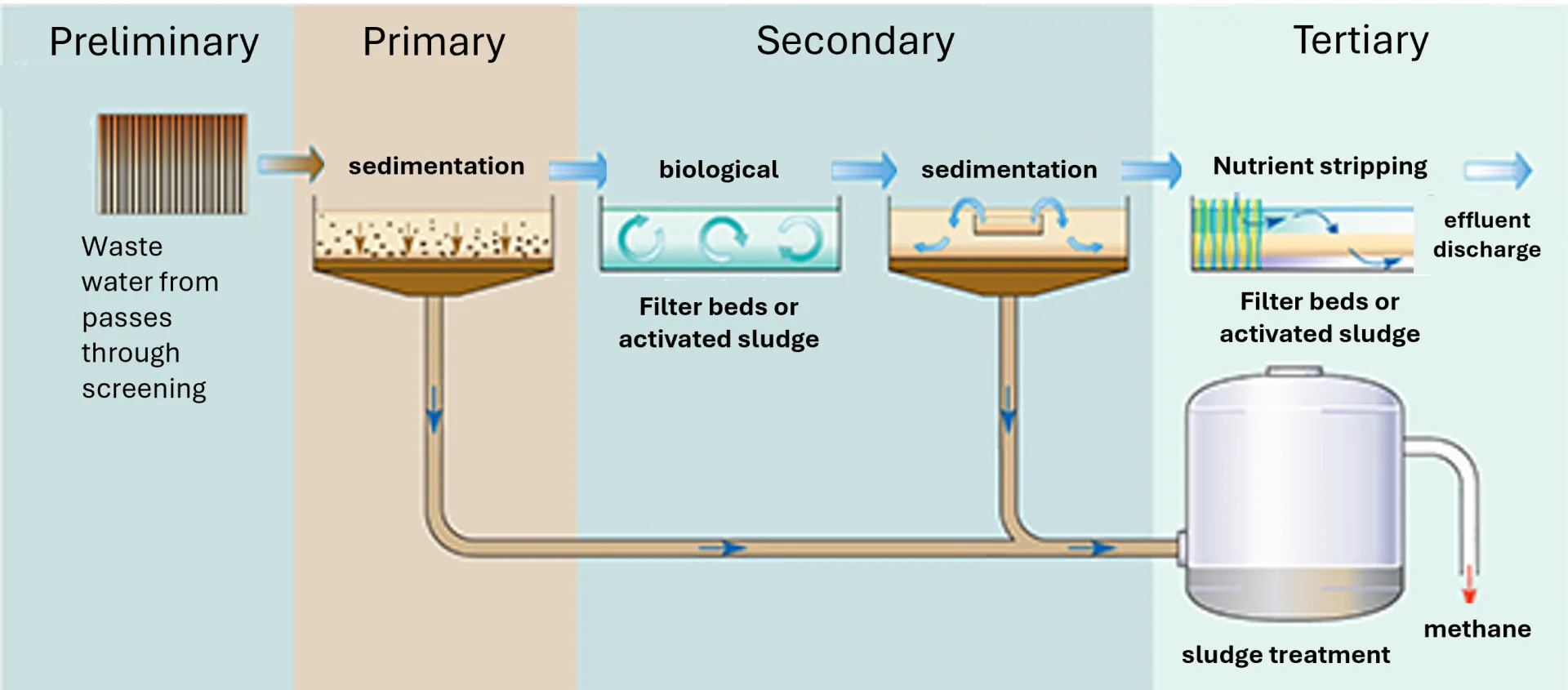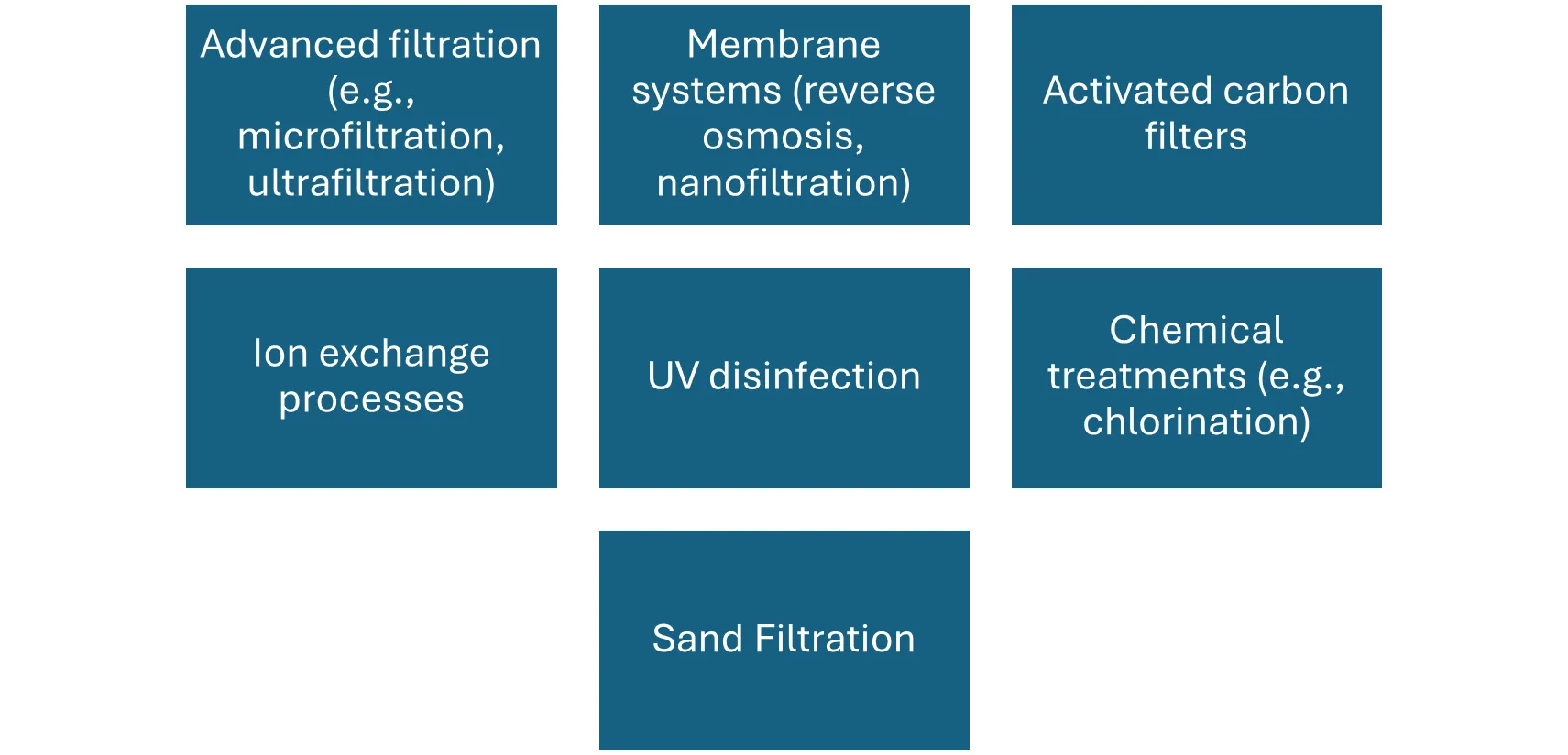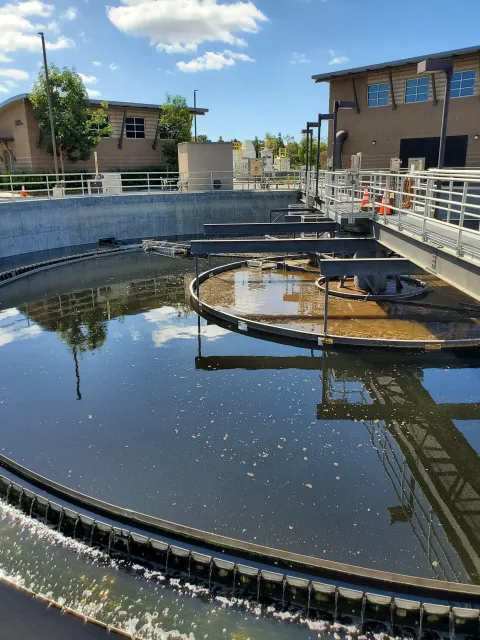Since 1900, global freshwater use has increased sixfold due to population growth and rapid urbanization. As cities expand, the pressure on limited water supplies intensifies. To ensure sustainability, we must use less water than the amount naturally replenished. At present, we are falling short of that goal, especially as agriculture, industry, and households all compete for access to freshwater (Bernstein, 2019).
Thankfully, practical solutions are available. Two stand out: recycling water and producing food locally. Urban agriculture supports both, but it depends on reliable water sources. This is where tertiary treated water becomes essential. It is a safe and sustainable resource that supports food production while helping to conserve water in urban settings.
The Urban Water Cycle Begins With You
Each time you wash dishes, take a shower, or flush the toilet, you contribute to the urban water cycle. That water, which starts as clean and drinkable, becomes wastewater after use. But its journey doesn’t end there.
Many cities now invest in advanced water treatment technologies that allow used water to be cleaned and reused. When treated to tertiary levels, this reclaimed water can safely be used for non-drinking purposes, including irrigating crops and maintaining green spaces. Urban farmers are increasingly relying on this high-quality water source to grow food close to home.
From Wastewater to Reuse: The Treatment Process
Water treatment involves multiple stages that gradually remove contaminants and improve water quality. Understanding these steps helps urban farmers make informed decisions about irrigation.

Primary Treatment
This stage removes large solid particles through physical processes like screening and settling.
Secondary Treatment
Biological processes are used to break down organic matter. Microorganisms consume pollutants and help clarify the water. This stage also removes many suspended solids and nutrients (In-pipe Technology, 2023).
Tertiary Treatment
The final and most advanced step further purifies the water. It eliminates inorganic compounds, pathogens, residual nutrients, and even pharmaceutical traces. Common tertiary methods include:
Filtration through sand or membranes
Ultraviolet (UV) disinfection or chlorination
Reverse osmosis
Targeted nutrient removal
These methods produce high-quality water that is safe for agricultural use, especially in urban environments (Santos et al., 2023).

Why Tertiary Treated Water Works for Urban Farming
Using reclaimed water that has undergone tertiary treatment offers clear benefits for food production in cities.
Improved Safety
Tertiary treatment significantly lowers the risk of pathogens, making the water safer for irrigating crops that are eaten raw, such as herbs and leafy greens (Christou et al., 2017).
Nutrient Support
Although many nutrients are removed during treatment, reclaimed water may still contain trace amounts of nitrogen, phosphorus, and potassium. These nutrients can support crop growth and help reduce fertilizer needs (Shtull-Trauring et al., 2022).
Better Soil Conditions
Because tertiary treated water usually contains fewer salts than lower-quality reclaimed water, it poses less risk of long-term soil salinization. This helps maintain healthy soil for continued growing (Bernstein, 2019).
Practical Tips for Urban Farmers
To get the most from tertiary treated water, urban farmers should use the following strategies:

Regular Testing
Test irrigation water and soil frequently. Monitoring nutrient levels, salinity, and potential contaminants helps ensure safety and productivity. Your local municipality may also publish water quality reports (Open University, n.d.).
Drip Irrigation
Drip systems deliver water directly to plant roots, minimizing evaporation and reducing the spread of pathogens. This approach also helps limit salt buildup on plant surfaces (SARE, 2021).
Choose the Right Crops
Select crops that align with the water’s nutrient content and composition. Many vegetables, herbs, and root crops do well with reclaimed water.
Conserve Water
Use mulch to retain soil moisture and schedule watering during cooler parts of the day to reduce evaporation and improve efficiency.
Keep Records
Document water use, crop yields, and any problems observed. Keeping clear records can help you refine your practices and make better decisions over time.
Follow Local Guidelines
Laws and recommendations regarding the use of reclaimed water vary. Stay updated on your region’s regulations and safety standards.
Take Home Message
As water scarcity continues to challenge cities worldwide, urban agriculture must evolve to be more resource efficient. Tertiary treated water offers a practical and sustainable way to support food production in urban areas without increasing the demand for freshwater.
By understanding how water is treated and applying smart farming practices, urban growers can take the lead in building a more resilient food system. Whether you’re managing a rooftop garden or a community farm, using reclaimed water can make your growing efforts both responsible and sustainable.
References
Bernstein, N. (2019). Potential impacts of irrigation with treated wastewater on agricultural crops and human health. In Emerging Technologies in Environmental Bioremediation (pp. 371–399). Elsevier.
Christou, A., Agüera, A., Bayona, J. M., Cytryn, E., Fotopoulos, V., Lambropoulou, D., Manaia, C. M., Michael, C., Revitt, M., Schröder, P., & Fatta-Kassinos, D. (2017). The potential implications of reclaimed wastewater reuse for irrigation on the agricultural environment: The knowns and unknowns of the fate of antibiotics and antibiotic resistant bacteria and resistance genes – A review. Water Research, 123, 448–467.
In-pipe Technology. (2023). Tertiary Wastewater Treatment – Why It’s Important. in-pipe.com
Open University. (n.d.). Understanding water quality: 5.1 Indicators of water quality. OpenLearn.
Santos, A. F., Alvarenga, P., Gando-Ferreira, L. M., & Quina, M. J. (2023). Urban Wastewater as a Source of Reclaimed Water for Irrigation: Barriers and Future Possibilities. Environments - MDPI, 10(2). https://doi.org/10.3390/environments10020017
SARE. (2021). Water Conservation. Sustainable Agriculture Research & Education.
https://www.sare.org/publications/building-soils-for-better-crops/managing-water
Shtull-Trauring, E., Aviani, I., Avisar, D., & Bernstein, N. (2022). NPK in treated wastewater irrigation: Regional scale indices to assess environmental and nutritional sustainability. Science of The Total Environment, 806, 150432.

